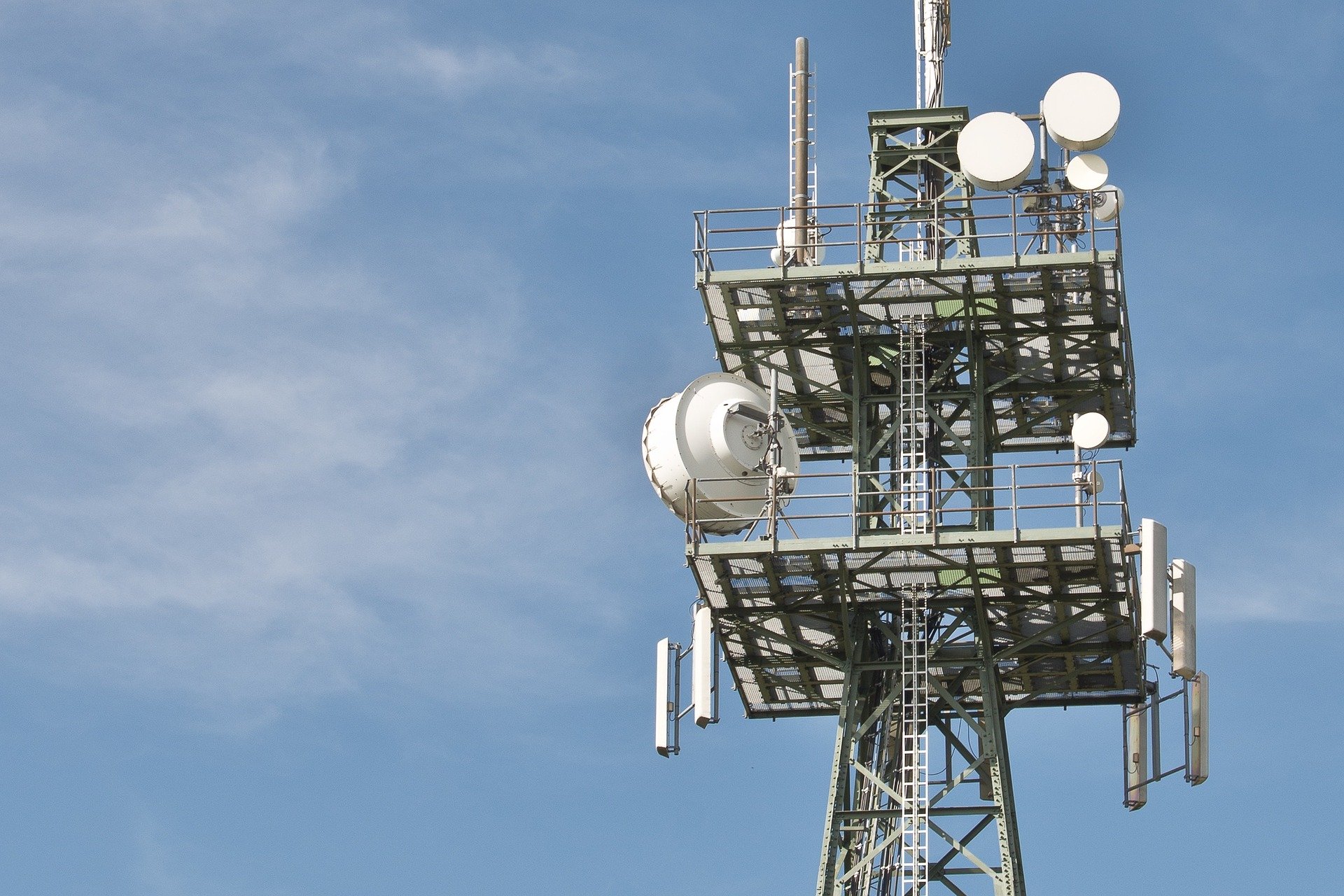Note : This page has been translated into English from French by a machine translation tool
The year 2012 was marked by the start of the rollout of 4G in France. 4G was the 4th generation of mobile networks, succeeding 1G, 2G and 3G. Each of these generations has brought with it the development of new technologies and associated functionalities. The 1G enabled the development of telephone communications and the 2G enabled the appearance of mobile data services such as sending messages via these networks : SMS was now possible. The next generation, 3G, made it possible to start using mobile networks for Internet browsing. This is where we come back to 4G, which allows the use of the latest generation of smartphones for streaming high-definition video. Each transition from one generation to the next is mostly synonymous with an increase in performance and data rates, implying de facto the improvement of existing services and even the appearance of new services that become possible only thanks to the increase in data rates.
This brief historical overview of the mobile network generations leads us straight to what is happening right now. You’ve probably heard about it, but eight years after the start of 4G deployment in France, and while its coverage is far from global across the country, this year 2020 is the year of the official launch of 5G in France. We might as well make it clear right away that we are here to talk about the technology itself, how it works, and what it will potentially mean in terms of the evolution of our society, through the new possibilities it will offer us and the new applications it will be able to bring us. If you are interested in forming an opinion on what constitutes a debate every time a new technology involving electromagnetic waves is released, namely the possible risks to our health, the potential increase in risks for the protection of our personal data or the environmental impact of the ever-increasing amount of data exchanged on our planet at any given moment, you should easily find articles that address these topics. You can also find information on the political stakes that are being discussed today regarding the installation of 5G networks.
How does 5G work?
5G starts from a very simple premise: we cannot increase data rates by continuing to use the frequencies used by the 4G network. Indeed, the number of connected devices is always increasing and the frequencies used by current networks are mostly below 3GHz (Gigahertz), these frequency ranges are saturated and the number of interferences is constantly increasing. For this reason, 5G will use frequency ranges that should be beyond 6GHz and extend up to 300GHz. However, it should be specified that when it is launched, 5G should use frequency ranges between 3 and 6GHz. These higher frequency ranges concentrate what are called millimeter waves. The interest here is twofold. On the one hand, by using a wider frequency range and relatively little used, we ensure that the network is more permanently unencumbered and thus make communications more fluid by limiting slowdowns for users. Using higher frequencies also increases the amount of data that can be transmitted.
We hold here one of the foundations of the 5G. Unfortunately, the millimeter waves used to transport this data have a major flaw: they have a very short range and do not pass through obstacles that may stand in their way, unlike the waves used by our current 4G network. Thus, these waves are easily blocked by buildings or trees. The solution to this, called massive MIMO, is to deploy a network of small relay antennas that will optimize the user’s network reception. Indeed, the terminal will automatically switch over when it notices a significant drop in its network when the user moves by connecting to an antenna in a more suitable location. We can thus imagine that in the future, many components of a city’s street furniture will be transformed into relay antennas in order to optimize the performance of the 5G network.
But 5G will also involve the use of complex algorithms to analyze the movement of waves in space and thus make it possible to more precisely direct the waves used for data transmission to a terminal in order to optimize its reception. This will aim to counter the problem that will emerge from the operation of the 5G network, namely the risk of interference caused both by the number of terminals connected but also the network of hundreds of small antennas that we were talking about earlier. This technique, called focusing, will make it possible to avoid wave crossings, sources of interference, by locating the destination terminal more precisely in order to send the data to it as directly and with as little dispersion as possible. This will also allow a certain energy saving by no longer permanently emitting a signal, but only when necessary.
Finally, the speeds promised by 5G will be possible thanks to the Full Duplex technology used by the antennas. We have talked about massive MIMO, whose acronym MIMO stands for Multiple Input Multiple Output. This principle makes it possible to do what it is impossible to do with the 4G antennas deployed today, send and receive data at the same time. This will then allow to participate in the increase of the data transfer speed.
What is 5G for ?
As you have understood, the technologies that will be the major components of our future 5G networks have one main goal: to offer data rates that are much higher than those we have today. But 5G will also have the advantage of offering virtually zero latency. Thanks to this, you will be able to receive information in real time unlike 4G networks whose latency time was not negligible and whose performance on this point was highly dependent on the number of devices connected to the network.
But then, how much faster is it ? It is quite difficult to quantify it precisely because the flow rates are always theoretical and dependent, as you have understood, on a very large number of factors. However, we can expect transfer speeds between 10 and 15 times higher than what we know today with our 4G network and a reduction in latency with about the same coefficient. Indeed, we could estimate, thanks to the potential of 5G, that the performance will be at least equivalent to what is offered to some of us who already have a fiber optic cable connection at home. However, we would like to take this opportunity to point out to all those who might see here a potential replacement for fiber optics for data transmission, that it is very unlikely that this is anything other than a complement. The network of small relay antennas would have to be connected by means of a fibre-optic cable connection.
But let’s come to the potential of 5G and all that it could enable that was not possible until now with current technologies. The IoT (Internet of Things) is one of the areas where 5G is expected to have the greatest impact. Indeed, it designates all the everyday objects connected to the network such as your television set, but also very soon a very large part of your household appliances. 5G brings here a potential absorption of this volume of devices that was not possible until now. Imagine a company with hundreds of connected objects all having the possibility to exchange information between them. Thanks to the power of 5G, all of these devices will be able to exchange this data with an excellent level of performance.
The 5G also offers the possibility of accelerating the implementation of autonomous vehicles. The transmission speed and minimum latency ensure that communication between vehicles or with connected objects in their environment such as traffic lights will be in real time, thus avoiding the loss of precious thousandths of seconds that could be fatal to passengers in an autonomous vehicle interacting with its environment through a simple 4G network. Medicine could also benefit from this technology. The power of 5G, which allows remote control of robots for surgical procedures, is expected to save precious time and money, since medical staff and patients will no longer necessarily have to travel hundreds or even thousands of kilometers to meet each other.
But 5G will most likely also be the way to improve performance for the entertainment of its users. Examples include its use to load a movie or high-definition videos in just a few seconds, much faster than what can be done today, or to play high-definition games online in the Cloud with near-zero latency. Users will no longer need to have the power on their terminal to run these games, but only the bandwidth offered by 5G to guarantee the display of images. The computing power needed to run the video game in question will be provided by a Data Center thousands of kilometers away. It could also enable the development of virtual reality, whether in the video game or for virtual visits to buildings, for example. The simple connection of a virtual reality headset to a smartphone, itself connected to a 5G network, could thus enable the user to benefit from these new functionalities.
As you will have understood, the uses are numerous and it is extremely difficult today to take the measure of all the applications that could be developed thanks to the performance of the 5G network and the very high speeds that it will offer to its users. One thing is certain, the deployment of 5G should be a major evolution that will allow us to further develop the interconnectivity of the world and the possibilities that will be offered to us by our everyday objects and those that we have yet to conceive of…









… [Trackback]
[…] Read More here on that Topic: soft-hardware.fr/en/the-5g/ […]
… [Trackback]
[…] There you will find 32731 additional Info on that Topic: soft-hardware.fr/en/the-5g/ […]
… [Trackback]
[…] Read More to that Topic: soft-hardware.fr/en/the-5g/ […]
Thank you for your sharing. I am worried that I lack creative ideas. It is your article that makes me full of hope. Thank you. But, I have a question, can you help me? https://www.binance.com/hu/register?ref=FIHEGIZ8
… [Trackback]
[…] Here you will find 2044 additional Information to that Topic: soft-hardware.fr/en/the-5g/ […]
… [Trackback]
[…] Find More on on that Topic: soft-hardware.fr/en/the-5g/ […]
… [Trackback]
[…] Find More on on that Topic: soft-hardware.fr/en/the-5g/ […]
… [Trackback]
[…] Find More on that Topic: soft-hardware.fr/en/the-5g/ […]
… [Trackback]
[…] Here you will find 6509 more Info on that Topic: soft-hardware.fr/en/the-5g/ […]
… [Trackback]
[…] Information on that Topic: soft-hardware.fr/en/the-5g/ […]
Thanks for sharing. I read many of your blog posts, cool, your blog is very good.
… [Trackback]
[…] Read More here on that Topic: soft-hardware.fr/en/the-5g/ […]
… [Trackback]
[…] Information on that Topic: soft-hardware.fr/en/the-5g/ […]
… [Trackback]
[…] Read More on on that Topic: soft-hardware.fr/en/the-5g/ […]
… [Trackback]
[…] Read More Info here on that Topic: soft-hardware.fr/en/the-5g/ […]
… [Trackback]
[…] Here you will find 50043 additional Information on that Topic: soft-hardware.fr/en/the-5g/ […]
… [Trackback]
[…] Read More here on that Topic: soft-hardware.fr/en/the-5g/ […]
… [Trackback]
[…] Read More Information here to that Topic: soft-hardware.fr/en/the-5g/ […]
… [Trackback]
[…] Find More on that Topic: soft-hardware.fr/en/the-5g/ […]
… [Trackback]
[…] Information to that Topic: soft-hardware.fr/en/the-5g/ […]
… [Trackback]
[…] Here you can find 46541 additional Info to that Topic: soft-hardware.fr/en/the-5g/ […]
… [Trackback]
[…] Find More here on that Topic: soft-hardware.fr/en/the-5g/ […]
… [Trackback]
[…] Info on that Topic: soft-hardware.fr/en/the-5g/ […]